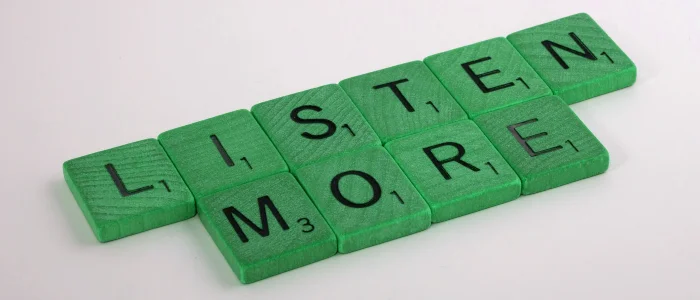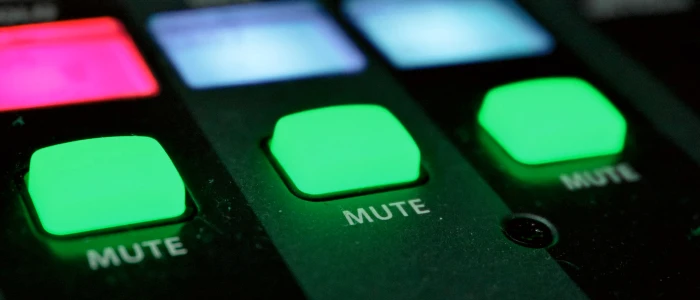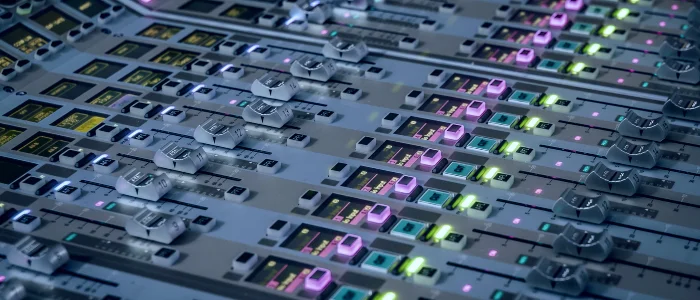Because mixing has no rules, there are many common mixing mistakes we all make. These misconceptions or mistakes can make our job very hard.
Although mixing sounds hard for most beginners, it’s not if you learn it correctly. You just need to know what is bad and what is good. What should be done and what are things to avoid?
In this post, I will tell you what are common mistakes of mixing and how to avoid them. You will be able to create better mixes faster without problems.
What Are The Most Common Beginner Mixing Mistakes?
There are many common mixing mistakes that we all make, especially these mistakes are done by beginner to intermediate mixing engineers.
When you start your mixing journey, you will always make some kind of mistake. As you grow and become more experienced, you will make fewer mistakes.
All the mistakes listed in this post come from my personal experience and I made all of these at one time. I am sure you have all made at least some of the mistakes I want to talk about.
So, read the list, remember them, and never make the same mixing mistakes ever again. Make more awesome mixes faster.
1. Not Listening Before Mixing

One of the most important and unfortunately frequently overlooked things is not listening to your track before mixing. And that is the first step to do before you start the mixing process. If you don’t know what your song sounds like, you can’t do it right.
When you listen to the whole track, you know how it sounds, where it has problems, what frequencies are bad, etc. You get an idea of how to approach the mixing. Because every song needs a different approach.
Always listen to the whole track before starting anything related to mixing. Don’t change the volume or anything. Just play it and listen to understand the song. It’s better to listen to your track a couple of times.
During the listening, you can find different kinds of issues such as bad recording, wrong notes, bad timing, and more. This is the best time to correct them and re-record any bad parts.
This is one of the most common mixing mistakes that almost every beginner and even intermediate engineer make. So, always listen to your song before doing anything else. It will make your job easier.
2. Skipping Gain Staging
The next most common mistake you can make is leaving out the gain staging. Or making it incorrectly. If you skip gain staging, the mixing will be very hard to do. You won’t be able to create the mix you want.
Gain staging is a process in which you set the levels of different instruments using just faders. It’s easy to do and you must do it before applying EQ, compressor, or anything else. And that’s because you need to listen to your whole track.
Depending on the song, you may need to boost the guitar volume and make the bass low, or something similar. Just level the volumes using only faders and make sure every instrument is hearable and you are satisfied.
Also, it’s important not to clip. Always have an eye on the master track and avoid any clipping. Make sure to leave headroom for mastering. It’s a good practice to have -10 or -12dB on the master bus.
You won’t overload the sound, avoid clipping, and the mix will be ready for mastering.
3. Loud Mixing

Another common mixing mistake is when you mix your track in a loud environment. You may think that it’s OK but it’s not. And there are a couple of reasons why mixing loudly is bad.
When we listen to music in a loud environment we perceive it differently. Loud music sounds better than quiet. That’s why there are loudness wars.
So, when you mix loudly, you may think that it sounds great and make many mixing-related mistakes. Sometimes it’s hard to find issues in loud mixes. Because we think that sounds good.
But you can’t mix when it’s too quiet. So, you need to find the best spot. Just dial the volume in your DAW or on your audio interface and find the medium volume. It mustn’t be too loud or too quiet.
Balance is everything in mixing. So, you need to have a good, balanced volume to start mixing. In this case, you will hear everything as they sound and you will find issues without problems.
4. Bad Instrument Panning
Panning is where most beginners make mixing mistakes. And it’s the second step after you complete the gain staging. Without good instrument panning, you can’t create great music. Every instrument needs a different approach.
When you have a proper instrument panning on your mix, it will sound better and you will have to do fewer tweaks while mixing. Panning is one of the most important things in mixing.
Panning means when you pan instruments on different sides. Some instruments such as bass or vocals stay in the center. But instruments like guitars need to be on the sides. If you need to know how to pan guitars, read this post.
Every DAW has a built-in knob for panning for every track. So, you don’t need to install anything else. You just need to know what instrument to pan and what to leave in the center.
You need to listen to your track and decide how to pan instruments. Every song requires a different approach. The goal is to make space for the track to breathe and create a stereo image. Incorrect panning can ruin mixes.
5. Forgetting About Phasing

Another popular mixing mistake is phasing. And not only beginners make this mistake but professionals do too.
Many times it’s forgotten and you don’t understand why your mix sounds bad. And you find out that it was phasing.
Phasing is when two instruments’ audio waves don’t match. This happens when you have two different recording sources for different instruments or the same instrument. You want to be sure that instruments are in phase.
For example, if you have two different mics placed in front of the amp but they are at different distances from the speakers, one microphone will receive the sound sooner than the other. So, they are out of phase. Audio waves phase out each other and it sounds bad.
Of course, you can’t measure distance in millimeters. And also you want one mic to be closer to the speaker and one further for specific reasons. That’s why every DAW has a phase switch.
When tracks are out of phase, you just switch on the phase on one track and they become in phase immediately. They sound bigger and fuller. You can test it yourself and see the difference.
And to find out if instruments are out of phase, just see their audio wave. If the first instrument’s wave goes up and the second instrument’s wave goes down, they are out of phase. Instruments to be in phase, their audio wave must be the same.
So, always check the audio phasing. If you do everything correctly and it still sounds bad, most of the time it’s a phase problem. Phasing is one of the most common mixing mistakes people make.
6. Not Doing High and Low Cut
The next mistake is related to EQ. And it’s when you are not using HPF and LPF. Although, it’s easy and perhaps the first step when you start using EQ, many times this step is skipped. And that’s a mistake to avoid.
High pass and low pass filters are the processes when you cut very lows and highs on the frequency range. Sometimes people use terms like high cut and low cut. They are the same and you need to start with cutting lows and highs before you do any boost or cut.
High pass or low cut means when you cut low frequencies that are not needed and create muddy sounds. And low pass or high cut is the opposite – you cut very high, fuzzy frequencies.
Every instrument needs a different LPF and HPF approach. Depending on their frequency range. But you need to start doing it.
Every good EQ plugin has LPF and HPF options. So before starting boosting or cutting any frequencies, start with low and high cuts.
7. Relying Only On Eyes

One of the most common mixing mistakes is when you rely on your eyes instead of your ears. And the reason is digital plugins. Because they offer visuals, you tend to mix your track according to what you see.
But we don’t see music. We hear it. So, the important thing is how our track sounds. Not how the frequency or compressor looks when we tweak it. Many beginners make this mistake and you should avoid it.
What I mean by relying on eyes is when you do your mixing according to your plugin’s visuals.
For example, when you make EQ changes and look at the spectrum, you may think that this frequency needs to be cut because it peaks. Or that frequency needs a boost because it’s very low.
In reality, it’s wrong. It doesn’t matter how it looks. What matters is how it sounds. Of course, visuals are great and you can use them, but always rely on your ears and make sure it sounds good.
8. Mixing Only In Solo
A mistake I made a lot when I was starting. Pretty sure many of you do too. Mixing solo can be good and important, but mixing only in solo is bad for your mixes. You must throw away this habit and your mixes will sound better.
Mixing solo is when you turn off all the instruments and only leave the track you are mixing. You may EQ it, or add a compressor, and it will sound great.
But as soon as you switch on other instruments and listen to the whole track, it won’t sound great.
Because you mixed in solo but not with other instruments as a reference, your track doesn’t sound as you wanted. I made this mistake many times and my mixes weren’t as good as I wanted them to be.
What you need to do to avoid bad mixes, you need to mix every instrument in the context of the whole mix. Don’t switch off other instruments. Leave them and hear how your track sounds in the whole mix while you make EQ changes or add a compressor.
It will be hard from the start, but soon your ear will get used to it and you will have no problem.
But mixing in solo is not bad at all. Sometimes you need to solo a track to find some issues or bad frequencies. However, when you do all the cosmetic changes, it’s time to turn on the whole mix and start tweaking EQ, compressor, etc.
9. Not Checking In Mono

Although we want our songs to be stereo, you must check how your track sounds in mono. Because you have instruments panned on different sides, there is space for every instrument and it sounds good.
But as soon as you listen in mono, you may find out that it doesn’t sound as good. Some instruments are lost, some are too loud, the whole track is unbalanced, etc. That’s why you need to check your track in mono while mixing.
Every modern DAW has a mono switch. So, you can easily check your track in mono. And if a mix sounds good in mono, it will sound good in stereo too. But not vice versa.
So, when you do panning, check how it sounds in mono and stereo. And continue this process when you add EQ or compressor to your tracks. You should always check your track in mono while mixing.
10. Heavy Use Of Compression
A compressor is an awesome tool and it can make our tracks good and punchy. But incorrect use of it can completely ruin our song. So, be careful when using compressors. You have to be gentle.
We want our songs to be dynamic but at the same time, we want to retain consistency. So, we need a compressor to lower dynamics and make it even. But we don’t want to overdo it because it can ruin everything.
And when applying a compressor on a track that’s where our ears come in handy. It’s important what we hear, not what we see.
You want to hear what effect the compressor adds to our track. Is it good or bad? Does it squashes and flatten our track? Or does it make it even and punchy?
The goal when using a compressor is to make the sound even. For example, the bass is a very dynamic instrument. You play very well and record your bass perfectly. But if you listen to it, some notes and parts will be loud but some parts will be quiet. We want to avoid it and make it even.
That’s why we need a compressor. It lowers the loud parts and brings up the quiet parts. So, it makes an even sound but still preserves the dynamics. But if you overdo it, the sound will become squashed with no dynamic. And our track will sound robotic and flattened.
Be subtle when using a compressor and rely on your ears. Also, do it in the context of a mix. Not in solo.
11. Plugins On Every Track

And one of the most common beginner mixing mistakes is when they use plugins on every track. I can assure you that it’s not necessary.
Some instruments sound good without any changes and fit well with other instruments in the music.
If you dial a good sound, play, and record instruments well and tight, you will use fewer plugins in mixing. Because with mixing you can’t make a bad track sound good. It must be well played and recorded.
With mixing you just make cosmetic changes to clean instruments and make sure that they sound good together. So, it’s not mandatory to use an EQ or compressor on every track. If an instrument sounds good and sits well in the mix, leave it just as it is.
Too much tweaking can ruin everything. So, if an instrument is well-recorded, panned correctly, and sounds good, it doesn’t need anything more. The main goal of mixing is for the whole track to sound good and clean.
Conclusion
Mixing is a very important step after recording. Here you clean your sound, make some cosmetic changes, and make sure it is ready for mastering. Just remember these mixing mistakes you have to avoid and your tracks will sound much better. Also, the mixing process will be much easier and faster. Experience comes with practice.
